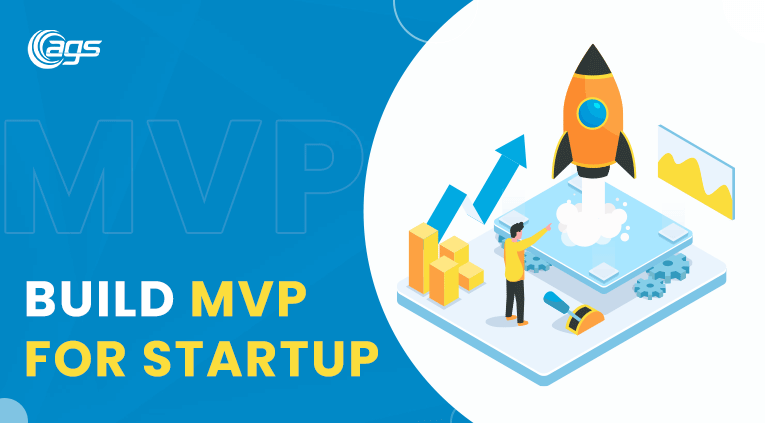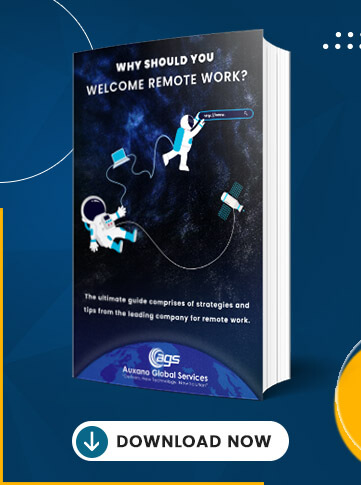The concept of an MVP (Minimum Viable Product) has become an essential part of the mobile app development process for many startups and businesses. It is a way to quickly test ideas and ensure they are viable before investing in full product development.
This approach has been around since the early days of software development. Still, it wasn’t until recently it gained widespread popularity as a cost-effective way to bring products to market faster.
By using tools like A/B testing and analytics, companies can gain valuable insights into how their products will perform before committing resources toward total production. With this knowledge, companies can make educated decisions about what features should be included in their final product – allowing them to create more successful products at lower costs than ever.
So how much will your startup need to cost to build an MVP? Let’s take a look!
Before we dive into this topic, let’s look at some vital statistics.
Statistics
According to reports, around 90% of startups fail, and only a handful of companies sustain long-term success due to a lack of the right product. Thus, it becomes important to design and launch a minimum viable product first to test the market response.
As per Harvard reports, more than 30,000 new products are introduced every year, and out of them, only 5% survive due to a lack of product-market fit. However, with an MVP, this can be reduced significantly.
On the other side, there are several case studies of successful products that started as MVPs and now they’re massive sensations.
Top 5 Popular Apps Started With MVP
Many startups wonder what it takes to develop an MVP and get their product on the market. To help provide some insight, here are five popular apps that were started with an MVP.
1. Uber
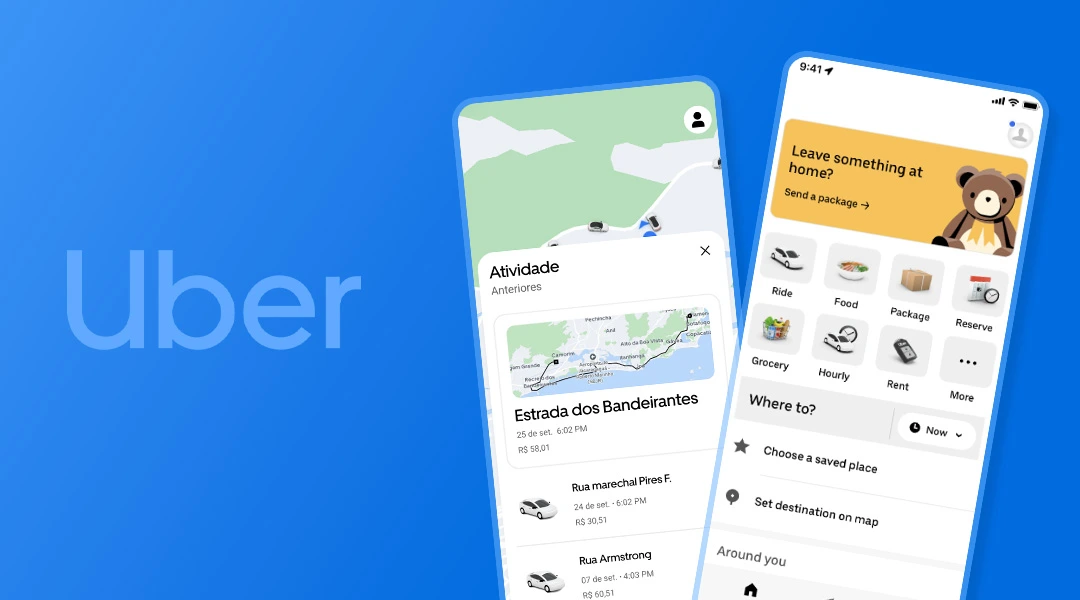
Uber was first launched as an MVP with a basic web page and a prototype mobile app. The team then tested the concept through user trials before launching it in a handful of cities. Today, it has become one of the biggest apps in the world. Earlier, the concept of an MVP helped the company to launch its product at a much lower cost than it would have taken if it had gone for a full-fledged product.
2. Airbnb
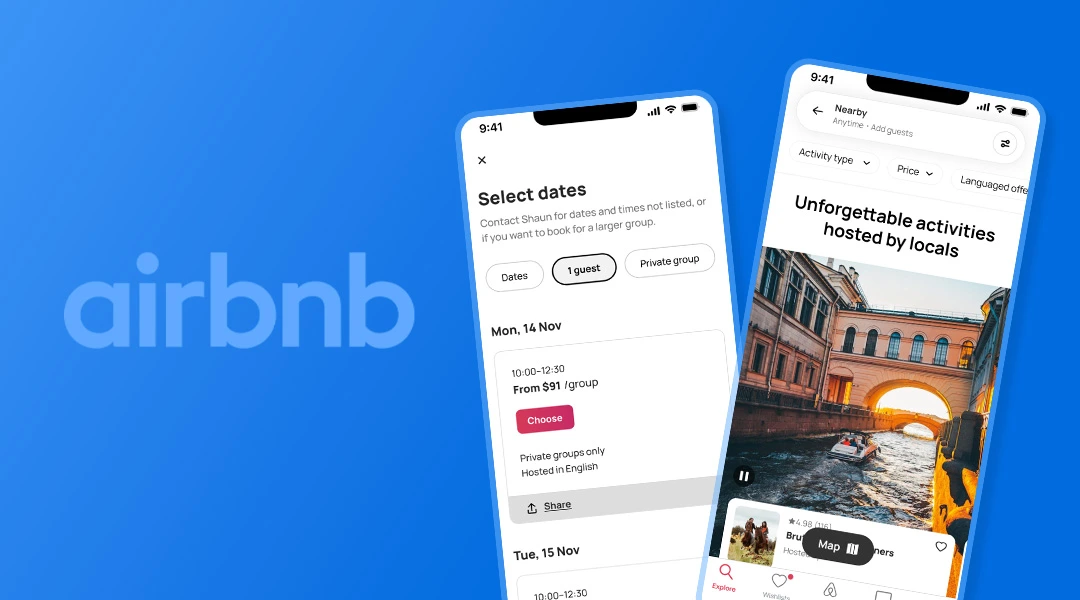
Airbnb started out as an MVP with some hand-coded HTML pages and a few prototype versions of the mobile app. The company then tested out the concept by offering free stays to early users and gradually built up its user base before launching the final product. By testing their innovative features like location-based search and user ratings, the team was able to create a successful product without having to commit large amounts of resources.
3. Dropbox
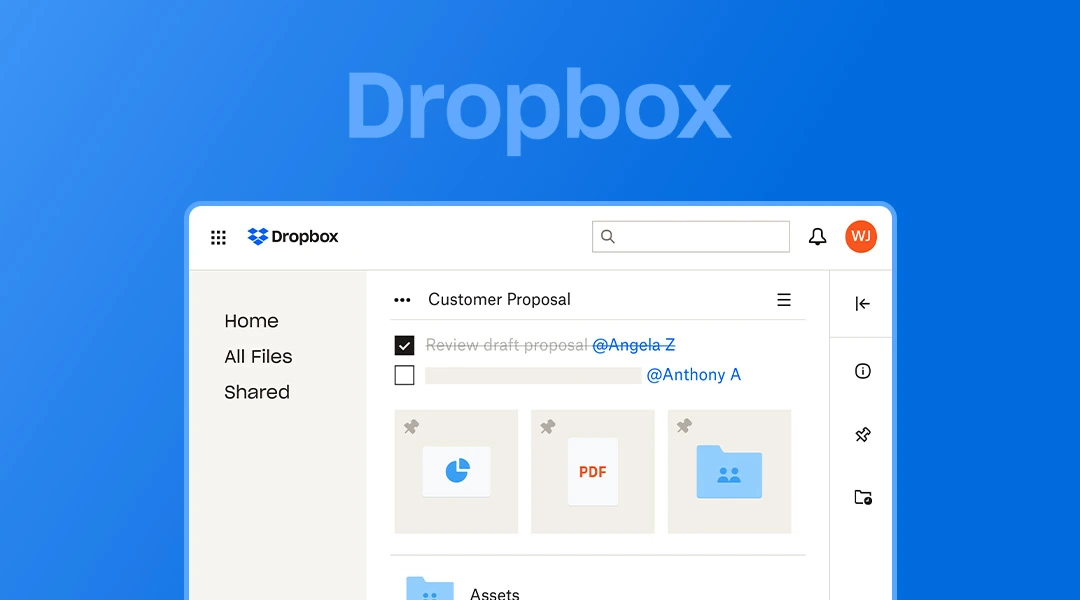
Dropbox launched as an MVP with a simple web page and demo video to explain the concept. After getting feedback from users, the team then created a prototype and slowly added more features as they developed their product. This allowed them to slowly build up their user base without having to invest large amounts of money.
4. Instagram

Instagram started out as an MVP with a few prototype apps that allowed users to take and share photos. The team then tested the concept by rolling out the mobile app to a few users and gradually added more features as they developed their product.
5. Buffer
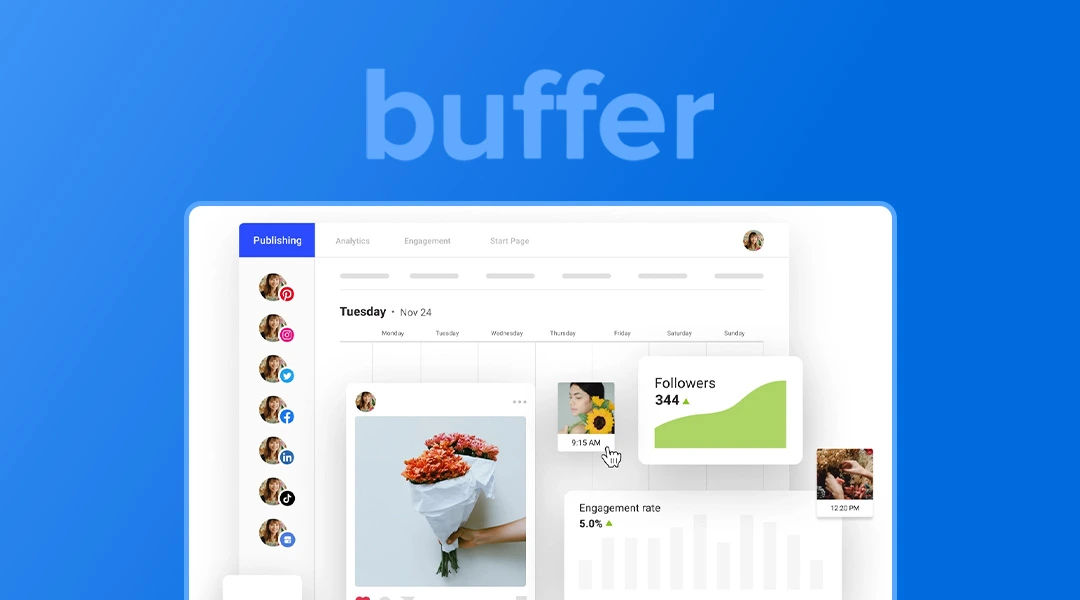
Buffer started out as an MVP with a landing page and the ability to schedule social media posts. The team then tested the concept by offering free accounts to early users before launching the full version of their product. By testing out a few key features, the team was able to create a successful final product — Buffer.
Now that we’ve looked at some successful cases, let’s take a look at what exactly an MVP is and why it’s significantly popular.
What is MVP, and Why Is It Popular?
An MVP (Minimum Viable Product) is a concept that has become increasingly popular in the development process for businesses. It is an effective way to quickly test ideas and ensure their viability before investing time and resources into full product development.
This approach gives companies valuable insights into how their products will function, allowing them to make educated decisions about what features should be included in the final product. As a result, it can help reduce costs while still creating successful products.
The core purpose of an MVP is to figure out whether or not there is a market for the product. This can be done by testing a prototype version of the product with a small group of users. This helps the team get valuable feedback on the product without having to commit large amounts of resources or time to its development.
Below are some of the reasons why MVP is so popular among businesses across multiple industries.
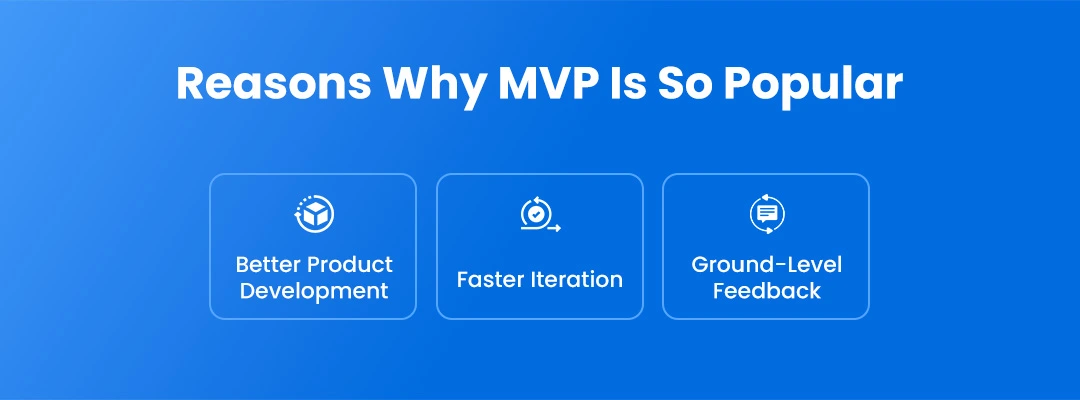
1. Better Product Development
An MVP helps teams to develop better products because it allows them to test ideas and iterate on them quickly. This approach gives companies the opportunity to experiment with different features and test them out on a smaller scale.
2. Faster Iteration
An MVP allows teams to make changes quickly, as they don’t have to commit large amounts of time or resources to a feature before testing it out. It also allows companies to save money and time because they don’t have to waste time and money on features that may not work.
3. Ground-level Feedback
By testing an MVP with a small group of users, companies can get valuable feedback on the product before spending large amounts of resources on its development.
On this note, let’s understand why PoC, wireframing, and prototyping play crucial roles in developing a successful MVP for your product.
Why PoC, Prototype & Wireframing are important factors in MVP?
PoC, or proof of concept, is an important factor when it comes to MVP development. This helps companies validate the idea behind their product and decide whether or not it is worth pursuing. Once the PoC has been approved, the team then creates a prototype and wireframe of their product to test out different features.
This helps them save time and money, as they can quickly test out features without having to commit large amounts of resources. This allows them to iterate quickly and make changes to the product based on user feedback.
Finally, a wireframe is used to create a visual representation of the product that makes it easier to understand and use. This helps companies ensure that their product is user-friendly and provides a better experience for their users.
The combination of all these factors helps companies develop an effective MVP that meets their goals and objectives.
These are the important factor while building an MVP they offer:
1. Data about the Product’s Failure Points
An MVP helps teams identify potential failure points in their product. By testing out features with a small group of users, companies can get valuable data about what works and what doesn’t. This helps them make more informed decisions about which features should be included in their final product.
2. Early Feedback from Potential Customers
An MVP also helps companies get valuable feedback from potential customers. This helps teams understand what users think about their product and how it can be improved. By getting feedback from potential users, companies can make changes to their product before it’s launched and ensure that it meets their customers’ needs.
3. Customer Behavior
An MVP also helps companies get valuable data about customer behavior. This helps them understand how users are interacting with their product, which can help them make changes to improve the user experience.
This brings us to the point of why you should need an MVP before building a product despite having all the resources and experience.
Why Should You Need an MVP?
MVP helps your business uncover the unseen and unanticipated opportunities or challenges that might exist. It helps you identify whether there is an actual need for your product or service in the market and make sure it has a place among competitors. Developing an MVP gives you the ability to see through the ideas and assumptions and make any necessary changes to your product in a much more efficient way.
With a minimum viable product, you can test out various features with a sample group of users and measure the progress and growth of your product. You can determine how well certain features work for different user segments or identify potential issues with the product. By doing so, you can ensure that your product has a successful launch in the market and generate a higher return on investment for your business.
A healthy ROI matters the most to any business in this competitive environment. A good MVP development process will help you identify and address problems quickly before they become significantly costly.
Another thing is that you can capitalize on the potential of an MVP to pave the way for you to acquire more investors. An MVP works as a proof-of-concept, showcasing your business idea and business model, which can help you secure investors to fund your future growth. It also gives them confidence in your product and the potential it might have.
Ultimately, it also solves the challenge of budget optimization as you can develop the MVP at a much lower cost to build and time as compared to a full-scale product launch.
Further, let’s explore some of the robust advantages of developing an MVP that every business should consider.
Advantages of Developing an MVP
Now that we’ve explored why your business needs an MVP, let’s discuss the advantages of developing one. Let’s dive into some of the transforming benefits an MVP can have on your business.
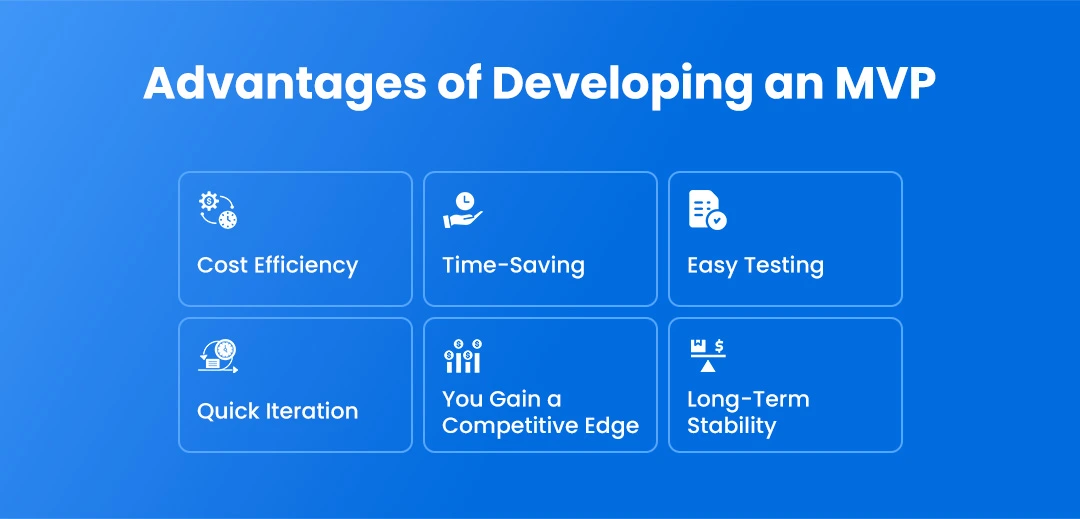
1. Cost Efficiency
Developing an MVP is a cost-efficient way to gain insight into the development of your product. Instead of investing a large portion of capital into the development of an entire product, MVPs allow you to test out initial versions with a limited budget to determine the viability of an idea. This ensures that you’re able to develop and launch a product in an efficient manner.
2. Time-Saving
An MVP model enables you to quickly release a product, allowing for faster feedback and quicker iteration. This, in turn, allows for faster product development and launch. An MVP also reduces the amount of time needed to develop a full version of the product, allowing you to focus on areas that need more attention without worrying about the overall cost to build.
3. Easy Testing
An MVP allows for easy testing of a product before releasing it to the market. With an MVP, companies are able to quickly and easily test different features and ideas without having to invest a large amount of time or money. This allows for quick feedback and analysis that can be used to improve the product before rolling it out to a wider target audience.
4. Quick Iteration
An MVP model enables quick and continuous iteration of products. Companies are able to quickly identify areas that need improvement and make changes accordingly in order to maintain and improve the product. This allows for regular updates and keeps a product competitive in the market.
5. You Gain a Competitive Edge
An MVP allows you to quickly enter the market and gain a competitive edge over your competitors. This advantage is especially useful for companies that are starting out, as they are able to quickly build a product and test it out in the market. This gives them an edge over competitors who may take longer to develop a product.
6. Long-Term Stability
An MVP model allows for the long-term stability of a product. By quickly releasing an initial version and testing it in the market, companies are able to identify areas that need to be improved and iterate on them in order to ensure long-term stability.

After exploring the core benefits of building an MVP, now let’s check out some of the must-have features of your minimum viable product.
Must-Have Features in MVP
An MVP’s functionality varies based on the needs of the product. However, there are some features that are common among MVPs and must be included in order to achieve their purpose.
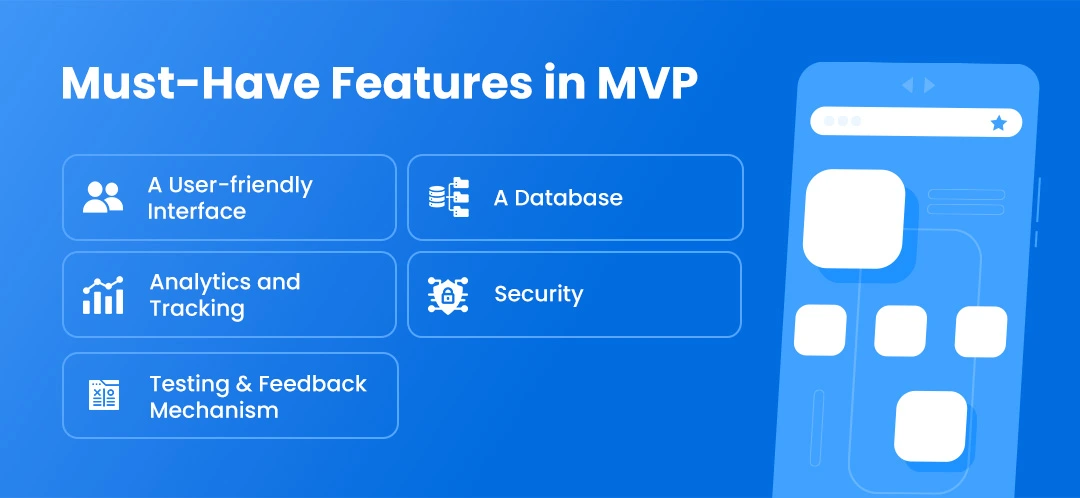
1. A User-Friendly Interface
The user interface should be easy to use and provide an intuitive experience for the user. It should have clear navigation and should be visually appealing. The interface should also provide feedback when users take action, such as confirming a selection or displaying an error message. While building an MVP, the user experience should be kept in mind while designing the interface.
2. A Database
An MVP must include a database to store user and application data. The database should have the ability to scale as more users use the product so that performance issues do not arise. Your database should also be secure and have the ability to handle large amounts of data. Moreover, the use of a cloud-based solution is recommended for MVPs as it allows for more flexibility and scalability.
3. Analytics and Tracking
Analytics is a key component in understanding user behavior and usage patterns. Analytics should be included from the start of MVP development in order to understand user needs and preferences. This data can then be used to improve the product further. Additionally, tracking is an essential part of analytics and should be included in the MVP so that user behavior can be monitored and analyzed.
4. Testing and Feedback Mechanism
In order to ensure the MVP is functioning correctly, testing should be conducted frequently throughout its development. Additionally, feedback should be gathered from users and used to make improvements to the product. This can include surveys, polls, interviews, and focus groups. These feedback mechanisms should be included in the MVP to ensure it is meeting user needs and that potential issues are addressed quickly.
5. Security
The security of an MVP is paramount, and data must be stored and transmitted securely in order to protect user information. The system should also have the ability to detect and prevent malicious activity. Additionally, the MVP should have authentication mechanisms such as username/password or multi-factor authentication to ensure only authorized users can access the backend.
Technical Stack To Develop MVP
When it comes to developing an MVP, the technical stack used is key. The right technology can make the difference between success and failure, as well as reduce development costs and simplify ongoing maintenance.
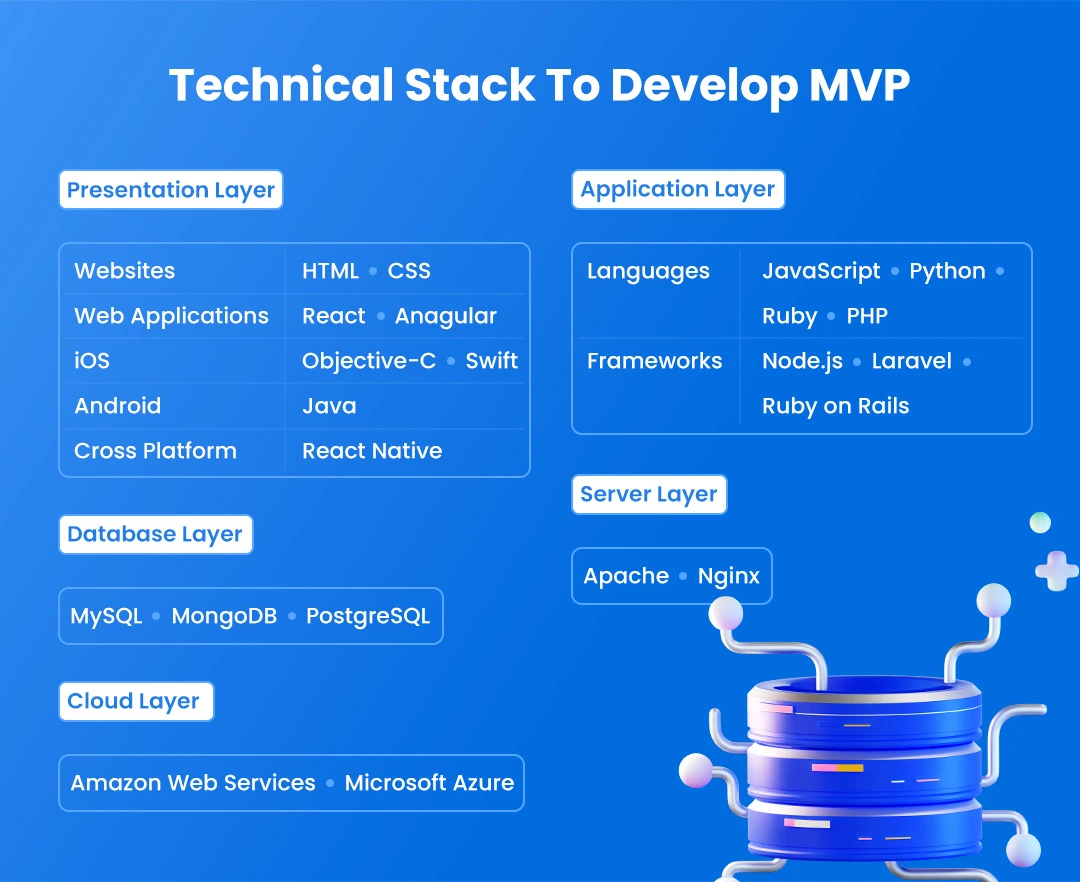
The first layer of a technology stack is the presentation layer. This is the user interface (UI) where users interact with your application, website, or product. Commonly used technologies include HTML/CSS for websites and React or Angular for web applications.
For mobile apps, developers often use native development languages such as Objective-C and Swift for iOS, Java for Android, and React Native for cross-platform development.
The second layer of a technology stack is the application layer, which consists of programming languages and frameworks used to develop the mobile app itself. Popular languages for this layer include JavaScript, Python, Ruby, and PHP. Some of the most popular frameworks are Node.js, Ruby on Rails, and Laravel.
The third layer is the database layer, where data is managed and stored. Popular databases include MySQL, MongoDB, and PostgreSQL. The fourth layer is the server layer, which hosts the mobile app and handles requests from users. Common server technologies include Apache and Nginx.
Finally, the fifth layer is the cloud layer, which is used for hosting services such as Amazon Web Services (AWS) and Microsoft Azure.
Choosing the right technology stack for your MVP is crucial to its success, so it’s important to do your research and make sure you understand the pros and cons of each technology.

Factor Influencing MVP Development Cost
When it comes to MVP development cost, there are a number of factors that can influence the total cost. Knowing what these factors are can help you get an accurate picture of what your MVP project might cost.
Below are some of the most common factors that play a role in determining the cost of minimum viable product development.
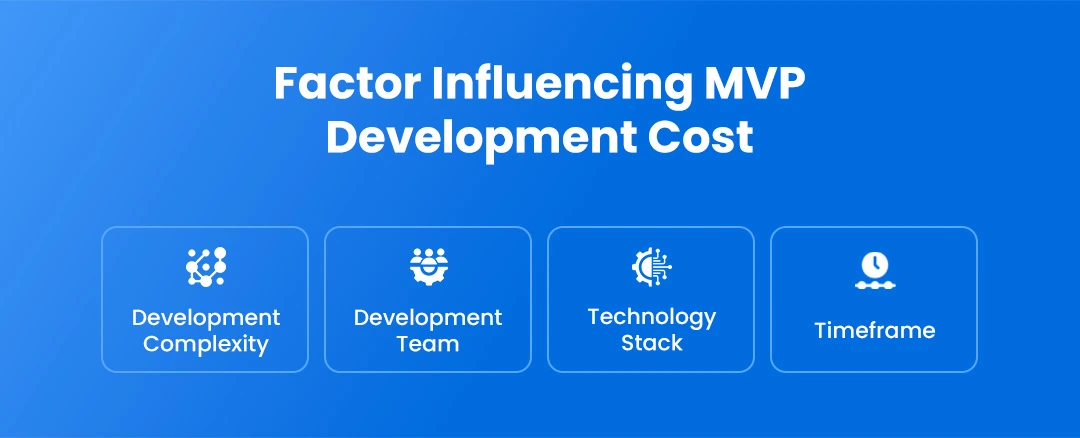
1. Development Complexity
The complexity of the project management is by far the most important factor when it comes to determining MVP development cost. Complex projects with many features and integrations will require more resources and take longer to develop, driving up the total cost to build. It’s important to carefully consider all of the features you need for your MVP. Moreover, you should prioritize them in order of importance so that you can focus your resources on the features that are essential for success.
2. Development Team
The skills and experience of the app development team can also significantly affect MVP development costs. While hiring a less experienced or offshore team may save you money upfront, it may end up costing you more in the long run if there are issues with the final product. Quality counts for a lot, so it’s important to consider the mobile app developers team’s experience and reputation when budgeting for an MVP project.
3. Technology Stack
The technology stack you choose for your MVP can also have a major impact on the development cost. Some technologies are more complex to work with than others and may require specialized skills or expertise. Additionally, certain stacks may be better suited to some projects than others. Be sure to research the available options thoroughly before making a decision so that you don’t end up paying too much for your MVP project manager.
4. Timeframe
The timeframe for developing an MVP can also affect the cost significantly. Longer development cycles often require more resources and may demand a larger budget. Therefore, it’s important to define the scope of your MVP project clearly and set realistic expectations for the timeline before you begin MVP development. This will help ensure that you avoid any surprises down the line.
After knowing the factors influencing the cost to develop an MVP development, it’s now time to understand how to launch an MVP and gain maximum traction successfully.
How to Launch MVP?
Launching a minimum viable product is a significant milestone for any product. It’s the first step towards launching a successful product and allows entrepreneurs to test their ideas in the market. But launching an MVP can be complicated and time-consuming, as there are multiple steps involved in developing and deploying it.
Here’s a step-by-step breakout:
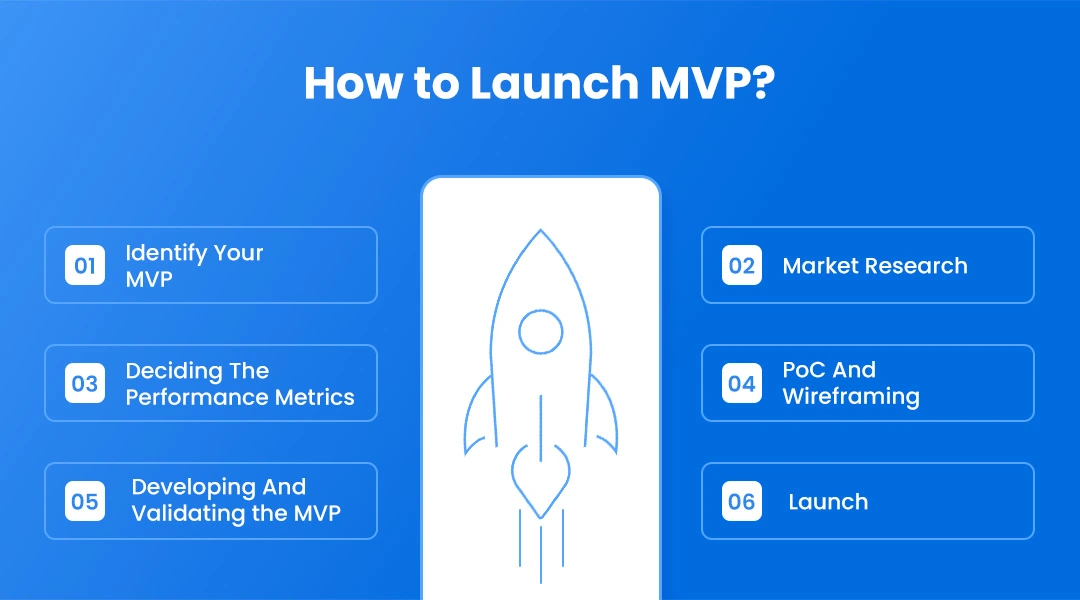
1. Identify Your MVP
It is essential to identify what exactly constitutes an MVP for your product idea. You should consider what features and functionalities are absolutely necessary to make the product successful before launching it.
This means deciding on the core objectives, user experience, and availability of resources. Moreover, you should identify how MVPs can be improved over time, as well as any risks associated with launching them.
2. Market Research
Market research is essential to understand your target audience and what they want. This includes researching competitors, your customer base, and the market you plan to enter.
It also involves collecting feedback from users and making adjustments based on that feedback. Also, try to anticipate user needs and how products can serve them better.
3. Deciding the Performance Metrics
You should decide which performance metrics you’ll use to measure the success of your MVP. These can range from customer satisfaction, conversion rates, and user engagement to page views, unique visitors, and cost per acquisition.
You should also establish a baseline measurement for each metric. These metrics will help you track the progress of your MVP throughout its development and deployment.
4. PoC and Wireframing
Proof of concept (POC) and wireframing are two important steps in launching an MVP. POC is used to identify the feasibility of a product by testing the assumptions before development begins.
Wireframing helps create a visual representation of features so that developers can get started quickly. This also allows for feedback from users and stakeholders before development starts.
5. Developing and Validating the MVP
Once the wireframing is complete, developers can start building the MVP. This involves programming, testing, and deploying the MVP. Additionally, you should validate the product before launching it.
This involves user validation, usability testing, customer feedback, A/B testing, and other methods to ensure that your MVP meets customer needs.
6. Launch
Finally, once all of the steps are complete, you can launch your MVP. Make sure to announce your launch through appropriate channels such as social media, email, and press releases. Additionally, you should monitor feedback from users to ensure that the MVP is meeting customer needs.
Once you launch the MVP, it’s become primitive to think about what to do after it and what strategies are required after that. To help you with that, read on to know what to do after an MVP launch.
Step After MVP Launch
After launching your Minimum Viable Product (MVP), there are a few things that you can plan to execute, including:
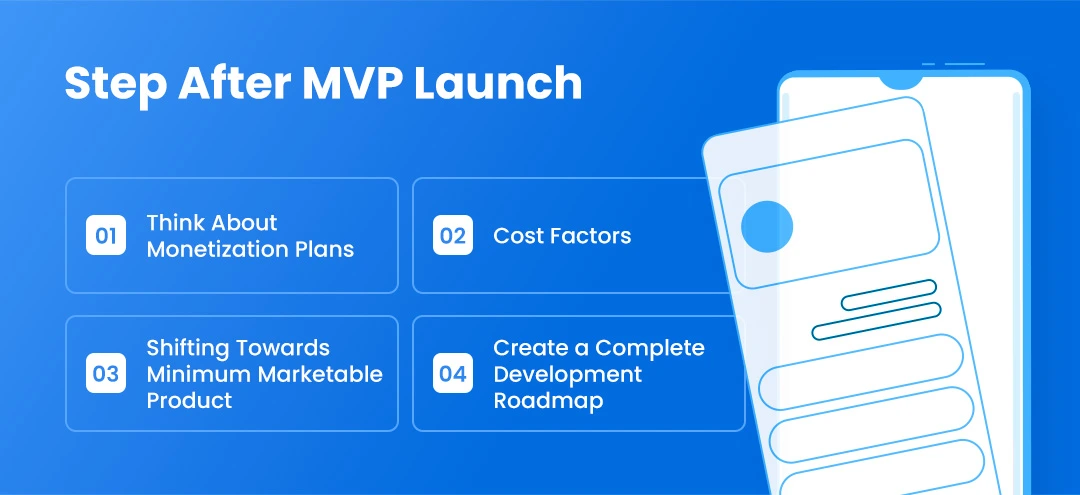
1. Think About Monetization Plans
Developing a plan to monetize your product is essential in order to maintain its long-term success and profitability. Consider different revenue models such as paid subscriptions, advertising, or in-app purchase. Moreover, also think of marketing strategies such as partnerships, influencer campaigns, and email campaigns to drive more users towards your product.
2. Cost Factors
When launching a product, evaluating the cost is extremely important. Depending on the type of product you are launching, different costs may be associated with it, such as software development, customer support, hosting costs, and more. Therefore, it is essential to consider all of these cost factors when creating a budget for your product launch. When you optimize the cost, it will help you maximize the return from your investments.
3. Shifting Towards Minimum Marketable Product (MMP)
You can also shift your MVP towards MMP by optimizing the features further and adding more value. This will help you gain more traction from users and increase user engagement. MMP refers to the state of your product when it is ready to be marketed and sold. This can help you in creating a competitive advantage for your product.
4. Create a Complete Development Roadmap
Creating a roadmap for your product is necessary in order to keep track of progress, plan for the future, and understand which features should be prioritized. This will also help you understand how long it will take to reach different milestones and what resources are needed to achieve them. Moreover, it will also help you identify any potential risks or obstacles that might arise.
How Much Does It Cost To Build An MVP?
We’ve already discussed the factors that influence the overall MVP development cost, including the choice of technologies, features to be included in the MVP, and more. However, the cost associated with developing an MVP can range from $15,000 to $150,000, based on the requirements. Generally, the cost includes:
1. Development time (either an hourly rate of developers or a fixed price depending on the scope)
2. Design cost (including graphics and user interface design, wireframing, etc.)
3. Hosting costs for the application or website
4. Any additional fees for third-party services
5. Cost of testing and quality assurance
This leads us to the time factor, as it’s important to know how long it will take to develop an MVP. Let’s discuss the timeline estimations of MVP development for better understanding.
Time Required In MVP Development
The time required for developing an MVP depends on a number of factors, such as the complexity of features and the amount of code that needs to be written. Generally, it takes 6 to 8 months for a simple MVP. However, more complex MVPs may take longer.
Furthermore, the timeline can vary depending on how quickly feedback is provided, how much time developers have to work on the project and other factors. It’s essential to have an experienced project manager who can manage the entire process and ensure that it doesn’t run over time and budget.
After discussing the cost and time estimations, it’s also important to understand the steps to reduce the overall MVP cost.
How To Reduce MVP Development Cost?
Costing is the deciding factor that determines the success or failure of any project management. It’s important to identify and reduce development costs early on during the MVP process in order to ensure that the project remains successful. Many businesses fail despite having good ideas and innovative products due to poor budget management.
Here are some tips on how you can reduce MVP development costs:
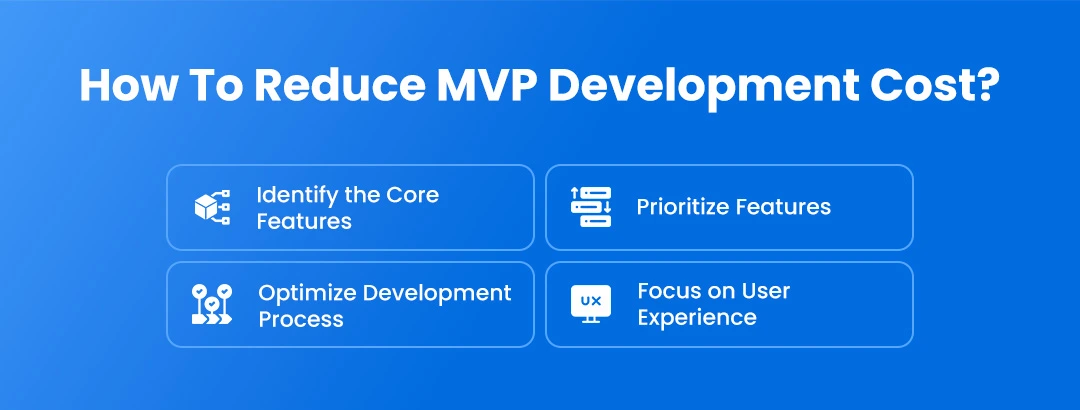
1. Identify the Core Features
It’s essential to focus on the core features of your MVP and the ultimate product. This will help you save money and effort on unnecessary features and development. Identify the features that are necessary for your MVP to be successful and focus on building those first.
Another thing to consider while deciding the core features is that they should be feasible, both in terms of development effort and cost. It’s important to evaluate the total cost of the feature before deciding if it should be included in the MVP.
2. Prioritize Features
Once the core features are identified, you must prioritize them according to their importance. This will help you decide which features should be included in the MVP first and which ones can wait until later versions of the product. It’s also important to remember that not all features are equal; some may require more effort or cost more than others.
Prioritization is done by understanding customer needs and feedback and focusing on those features that have the most impact. This helps in keeping development costs low as you’re only focusing on the essential features first.
3. Optimize Development Process
The development process can have a major impact on the cost of an MVP. It’s important to optimize the development process to ensure that expenses are kept low. By automating certain tasks and streamlining processes within the development team, you can reduce costs significantly.
It’s also important to use the right tools and technology for development. This helps ensure that the code is optimized and that the development process is efficient. Additionally, having a structured development workflow can help reduce costs by ensuring that tasks are completed on time and with minimal errors.
4. Focus on User Experience
The user experience is a major factor that determines the success of an MVP. Ensuring the product provides users with a great experience can help attract more customers and boost sales.
With a smartly-designed user interface and an intuitive design, users will be able to interact with your product easily. This means focusing on the usability of the product rather than its bells and whistles.
To gain an edge in the industry and capitalize on performance, it’s also important to hire an experienced MVP development company like Auxano Global Services.
How Auxano Global Services can Help You Create an MVP?
Auxano Global Services is an experienced and reliable MVP development company that offers end-to-end solutions to create successful products. Our team of experienced developers can help you design, build, test, and launch your product with the help of modern tools and technologies.
We build MVPs that are tailored to each client’s needs and have the potential to become successful in the market. We understand that time and cost are of utmost importance, so our team focuses on optimizing the development process to help you achieve your goals within the allocated budget.
Wrapping up!
Creating an MVP is a crucial step for any business and requires careful planning in order to be successful. With an effective MVP, you can test the product and gain real insight into customer behavior before investing in a full-fledged product. However, it’s important to keep costs low and optimize development processes to ensure a successful launch.
People also like to read:-
50+ Profitable Business Ideas For Ultimate Success
Frequently Asked Questions
-
1. How much does it cost to develop an MVP?
The cost of developing an MVP can vary depending on the features and the complexity of the product, and it’s usually estimated to be around $15,000 to $150,000. If you want to know the exact price of developing an MVP, feel free to reach our professionals with your requirements. They will provide an estimate as per your requirements.
-
2. Is it necessary to build an MVP?
Yes, it’s important to build an MVP as it helps in testing the product and gaining insight into customer behavior before launching the full-fledged product. In addition, it can also help in validating the idea and getting feedback from potential customers.
-
3. What are the benefits of building an MVP?
The main benefits of building an MVP include gaining customer feedback, testing the product, and validating the idea. An MVP also helps in gaining a competitive edge and meeting customer needs better. Additionally, an MVP can help in lowering development costs and optimizing the product.
-
4. How does an MVP development company help?
An experienced MVP development company can help in designing, building, and testing an MVP. Moreover, they can help streamline the development process and use modern tools and technologies to ensure the product is optimized.
-
5. What steps should I take to develop an MVP?
The steps include planning, designing, developing, testing, and launching. It’s important to ensure that all the steps are carried out in a systematic and efficient manner to ensure the product is successful.



![Flutter For MVP Development [Complete Guide 2023]](https://www.auxanoglobalservices.com/agsresources/wp-content/uploads/2023/04/Flutter-For-MVP-Development-Complete-Guide-2023.png)
